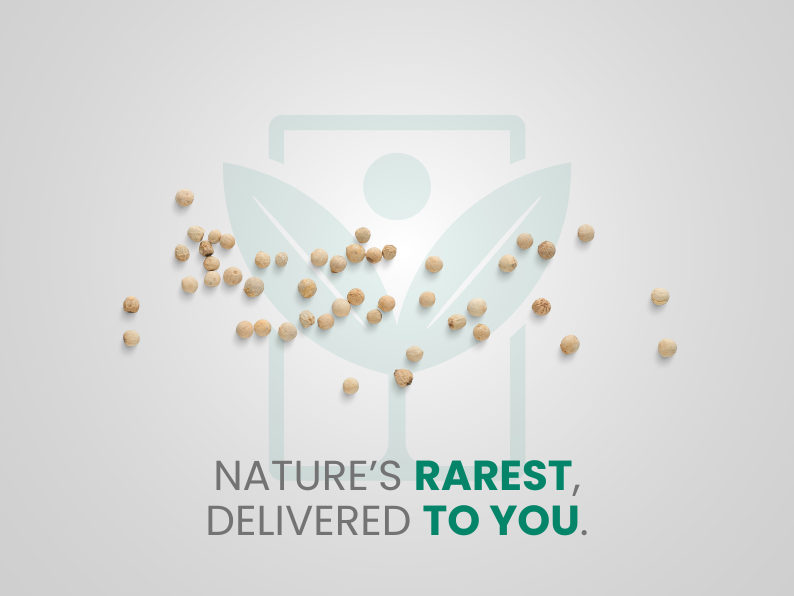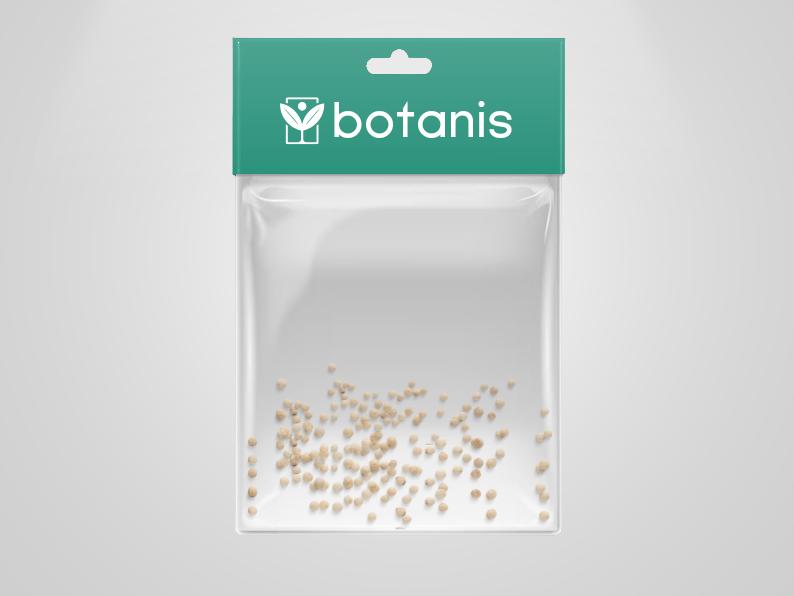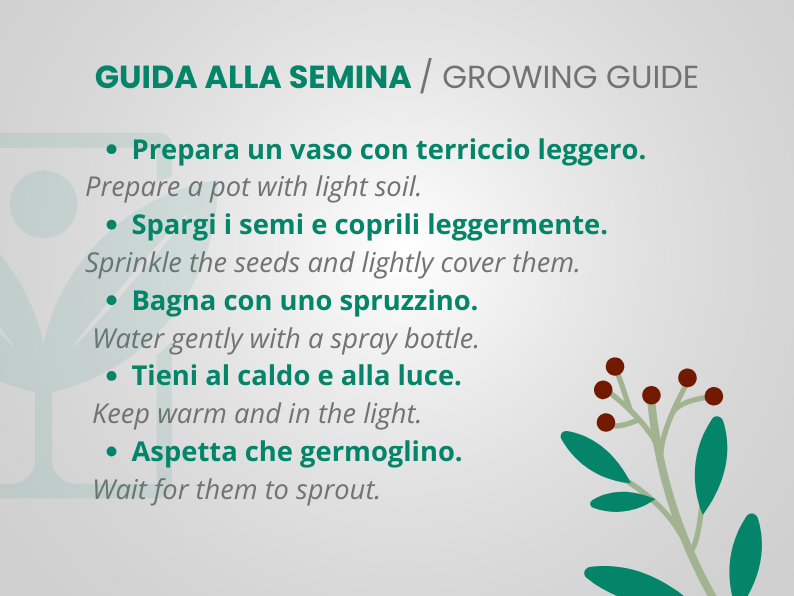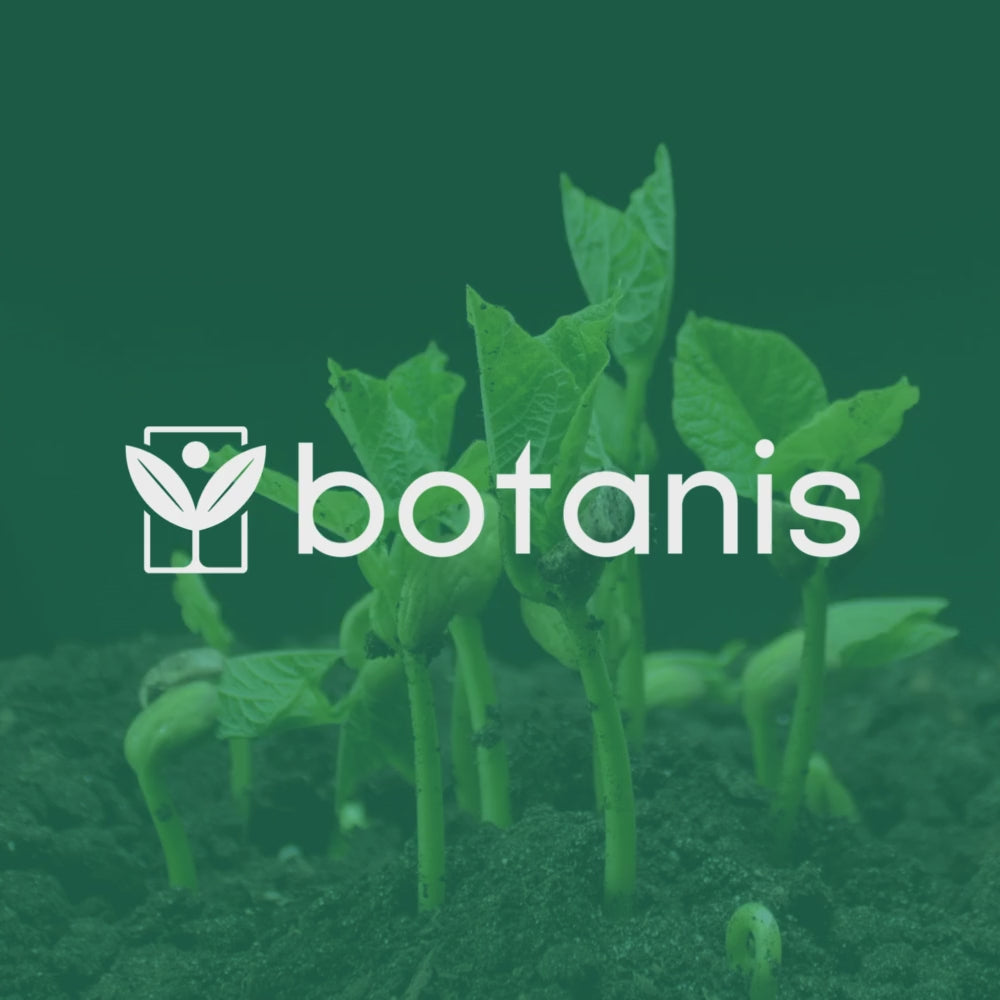10 PRICKLY PEAR SEEDS - opuntia ficus indica - high quality selected seeds - top fruit plant
Shipping time: 3-5 business days
Use code " BOTANIS10 " for a 10% welcome discount!
Free shipping: on orders over €39!
Couldn't load pickup availability

Description
PRICKLY PEAR - OPUNTIA FICUS INDICA, 10 SEEDS
The prickly pear (or Indian fig) (Opuntia ficus-indica) is a succulent plant of the Cactaceae family, native to Mexico but naturalized throughout the Mediterranean basin and in the temperate zones of America, Africa, Asia and Oceania.
It is an arborescent succulent plant that can reach 3–5 m in height.
The stem is composed of cladodes, commonly called paddles: these are modified stems, flattened and oval in shape, 30 to 40 cm long, 15 to 25 cm wide and 1.5-3.0 cm thick, which, joining together, form ramifications. The cladodes ensure chlorophyll photosynthesis, replacing the function of the leaves. They are covered with a waxy cuticle that limits transpiration and represents a barrier against predators. The basal cladodes, around the fourth year of growth, undergo lignification giving rise to a real trunk.
The true leaves have a conical shape and are just a few millimeters long. They appear on young cladodes and are ephemeral. At the base of the leaves are the areoles (about 150 per cladode) which are modified axils, typical of Cactaceae.
The meristematic tissue of the areola can be differentiated, depending on the case, into spines and glochids, or it can give rise to adventitious roots, new cladodes or flowers. Note that the floral receptacle, and therefore the fruit, is also covered by areoles from which both new flowers and roots can be differentiated.
The thorns themselves are whitish, sclerified, solidly implanted, 1 to 2 cm long. There are also unarmed varieties of Opuntia, without thorns.
Glochids are thin spines a few millimetres long, brownish in colour, which easily detach from the plant upon contact, but being equipped with tiny hook-shaped scales, they firmly implant themselves in the skin and are very difficult to extract, as they break easily when trying to remove them. They are always present, even in the defenceless varieties.
The root system is superficial, generally not exceeding 30 cm in depth in the soil, but on the other hand it is very extensive.
The flowers have an inferior and unilocular ovary. The pistil is surmounted by a multiple stigma. The stamens are very numerous. The sepals are not very showy while the petals are clearly visible and yellow-orange in color.
The flowers are usually differentiated on cladodes that are over a year old, more often on the areoles located at the top of the cladode or on the surface most exposed to the sun. At first, a single flower develops for each areole. The young flowers bear ephemeral leaves characteristic of the species. A fertile cladode can bear up to thirty flowers, but this number varies considerably based on the position that the cladode occupies on the plant, its exposure and also based on the nutritional conditions of the plant.
The fruit is a fleshy, unilocular berry with numerous seeds (polyspermy), whose weight can vary from 150 to 400 g. It comes from the inferior ovary adhering to the floral receptacle. Some authors consider it a false aril. The color varies depending on the variety: yellow-orange in the sulfarina variety, purple-red in the sanguine variety and white in the muscaredda. The shape is also very variable, not only according to the variety but also in relation to the formation period: the first fruits are rounded, the later ones have an elongated and pedunculated shape. Each fruit contains a large number of seeds, in the order of 300 for a 160 g fruit. Very sweet, the fruits are edible and have an excellent flavor. Once peeled and deprived of the tips they can be kept in the refrigerator and eaten cold.
prickly pear is a xerophilous plant. Recent genetic studies indicate that O. ficus-indica is native to central Mexico. From there it later spread throughout Mesoamerica and then to Cuba, Hispaniola, and the other Caribbean islands, where the first European explorers of Christopher Columbus's expedition discovered it, introducing it to Europe. It is likely that the plant was introduced to South America in pre-Columbian times, although there is no certain evidence to this effect; what seems certain is that the production of carmine, closely related to the cultivation of Opuntia, was already widespread among the Incas.
In Europe, the plant attracted attention not only for its fruits, but also as a possible tool for breeding the carmine scale insect, but it was necessary to wait until the 19th century for the attempt to be successful in the Canary Islands. At the beginning, it therefore remained a curiosity to be hosted in botanical gardens.
From here it spread rapidly throughout the Mediterranean basin where it naturalized to the point of becoming a characteristic element of the landscape. Its diffusion was due both to birds, which by eating the fruits ensured the dispersion of the seeds, and to man, who transported them on ships as a remedy against scurvy. In no other part of the Mediterranean has the prickly pear spread as in Sardinia, Sicily and Malta, where in addition to representing a constant element in the natural landscape, it has also become a recurring element in the literary and iconographic representations of the island, to the point of becoming in a certain way its symbol. The prickly pears collected in Sardinia were also brought to Eritrea to introduce cultivation for food purposes.
O. ficus-indica also expanded into arid and semi-arid environments in Asia (India and Ceylon) and the southern hemisphere, particularly in South Africa, Madagascar, Réunion and Mauritius, as well as in Australia. In many of these countries, prickly pears have become invasive, invading millions of hectares and requiring large quantities of herbicides to contain their invasiveness; only biological control was able to overcome them around 1920-1925, with the introduction of phytophagous insects such as the butterfly Cactoblastis cactorum and the scale insect Dactylopius opuntiae.
The plant is now cultivated in many countries, including: Mexico, United States, Chile, Brazil, North Africa, South Africa, Middle East, Turkey, Tunisia over large regions of the country and Italy (mainly in Basilicata, Sicily, Calabria, Puglia and Sardinia). The plant is moderately widespread in Italy also along the Ligurian coast.
The invasive nature of the species, which tends to replace the native flora by modifying the natural landscape, has also put some Italian regions on alert, including Tuscany, where a regional law expressly prohibits its use for naturalistic engineering interventions, such as regreening, reforestation and land consolidation.
It is a typical drought-resistant plant that requires temperatures above 0 °C, above 6 °C for optimal development. Prolonged winter temperatures below 0 °C, although not a limiting factor for wild plants, depress the vegetative activity and productivity of cultivated plants and can lead to their decline.
It is a plant that is very adaptable to different soil conditions. The soils suitable for cultivation have a depth of about 20-40 cm, are light or coarse soils, without water stagnation, and with pH values that oscillate between 5.0 and 7.5 (acid, neutral or slightly subalkaline reaction). From an altimetric point of view, the surfaces intended for cultivation can range from 150 to 750 meters above sea level.
Propagation is done by cutting, which is prepared by cutting one or two-year-old cladodes lengthwise into two parts, which are left to dry for a few days and then placed in the ground, where they root easily. Pruning, to be done in spring or late summer, serves to prevent contact between the cladodes, as well as to eliminate malformed or damaged ones. To improve the yield, a phosphorus-potassium fertilization, preferably organic, is advisable.
The technique of scozzolatura, that is, cutting the flowers of the first bloom, to be done in May-June, allows to obtain a second bloom, more abundant, with a more delayed ripening, in autumn. On the basis of this custom, we distinguish the fruits that ripen already in August, so-called agostani, of small dimensions, and the late or bastardoni, larger and more succulent, that arrive on the market in autumn.
The production of agostani does not require irrigation, which is instead required for the production of bastardoni.
In irrigated cultivation, a yield of 250-300 quintals of fruit per hectare can be obtained.
The varietal panorama of the crop is substantially limited to three cultivars that differ in the color of the fruit: yellow (Sulfarina), white (Muscaredda) and red (Sanguigna). The Sulfarina cultivar is the most widespread due to its greater production capacity and good adaptability to intensive cultivation methods. In general, however, there is a tendency to integrate the cultivation of the three cultivars, in order to provide the market with a product characterized by chromatic variety.
In Italy, 750,000 to 850,000 quintals are produced per year (1999-2005), mainly in the provinces of Catania, Caltanissetta and Agrigento. In fact, 90% of the area cultivated with prickly pears is located in Sicily, the remaining 10% in Basilicata, Calabria, Puglia and Sardinia. In Sicily, over 70% of the crops are concentrated in 3 areas: the hilly area of San Cono, the south-eastern slopes of Etna and the Belice Valley.
GERMINATION INSTRUCTIONS
The best time to start sowing is the end of March, when the danger of night frosts is almost completely averted; even better if you have a small, well-lit greenhouse or veranda.
Get some low polystyrene boxes, which should be filled up to 3 or 4 cm from the edge with a very rich compost, made up of humus, leaf mould, peat, river sand, field soil, fine gravel (or lava or expanded clay of the thin type) all in equal parts, to which should be added, finally, a handful of granular fertiliser for every ten litres of compost.
The latter should be sifted only for the surface layer which will serve as a bed for the growth of the small plants.
At this point, the surface must be divided into as many sectors as the species to be sown; carefully spread the seeds.
Cover the seeds with river sand and water with a sprayer several times, completely soaking the entire mass of compost. Then apply a glass plate as an airtight lid and place the box in a warm and very bright place, but not in direct sunlight.
The optimal temperature for germination is between + 20° and + 30°, with the maximum possible humidity. Germination is also stimulated by a certain night-time temperature range, such, however, as not to let the temperature fall below + 15°/ + 10°.
Within a few days, most of the seeds should germinate. After two weeks, it will be necessary to gradually arch the sowing by placing shims under the glass to avoid rot or the growth of mold and moss, otherwise inevitable (this can be prevented by spraying an anti-mold product).
Once July arrives, it will be essential to thin out the seedlings by pricking them out in another box without a glass cover.
This is an operation that must be carried out with the utmost delicacy so as not to damage the root hairs. The seedlings should be spaced about 2/3 cm apart.
Place the new boxes in a warm, very bright place, but not under the sun's rays, and water often in July and August.
Those who wish to sow in winter can do so in a heated and artificially lit germinator.









